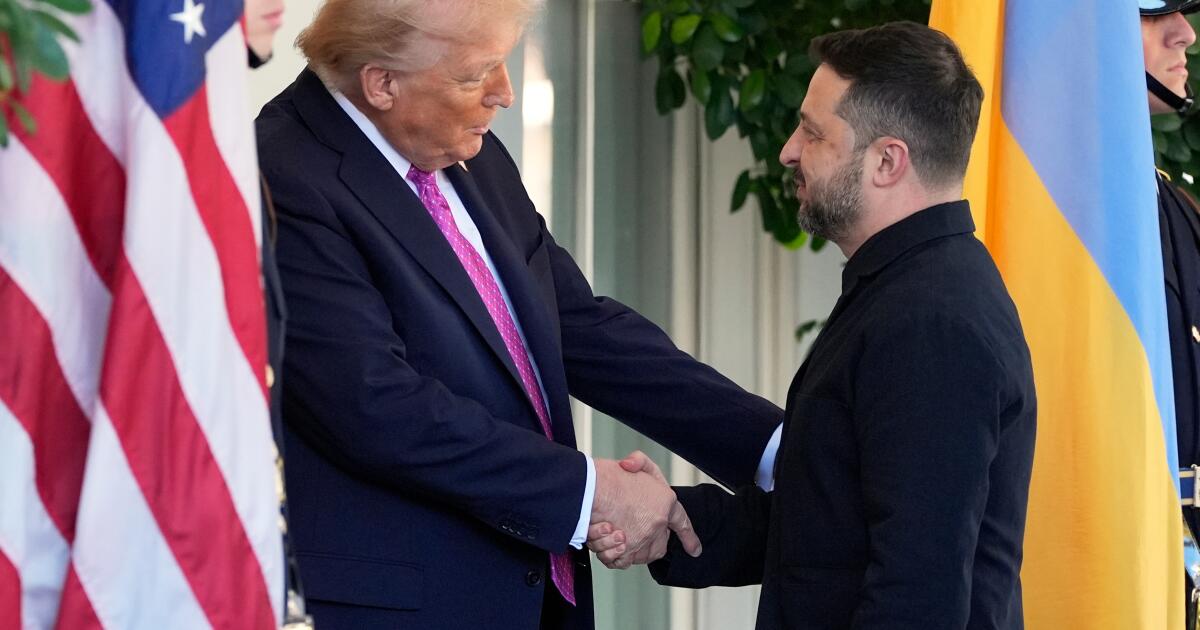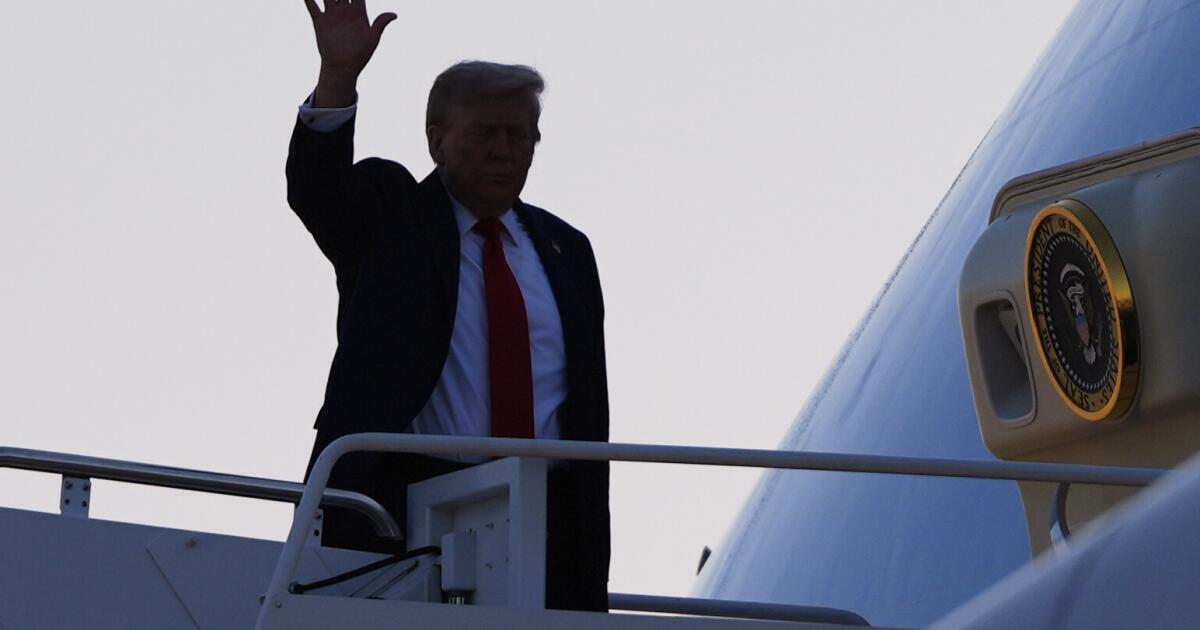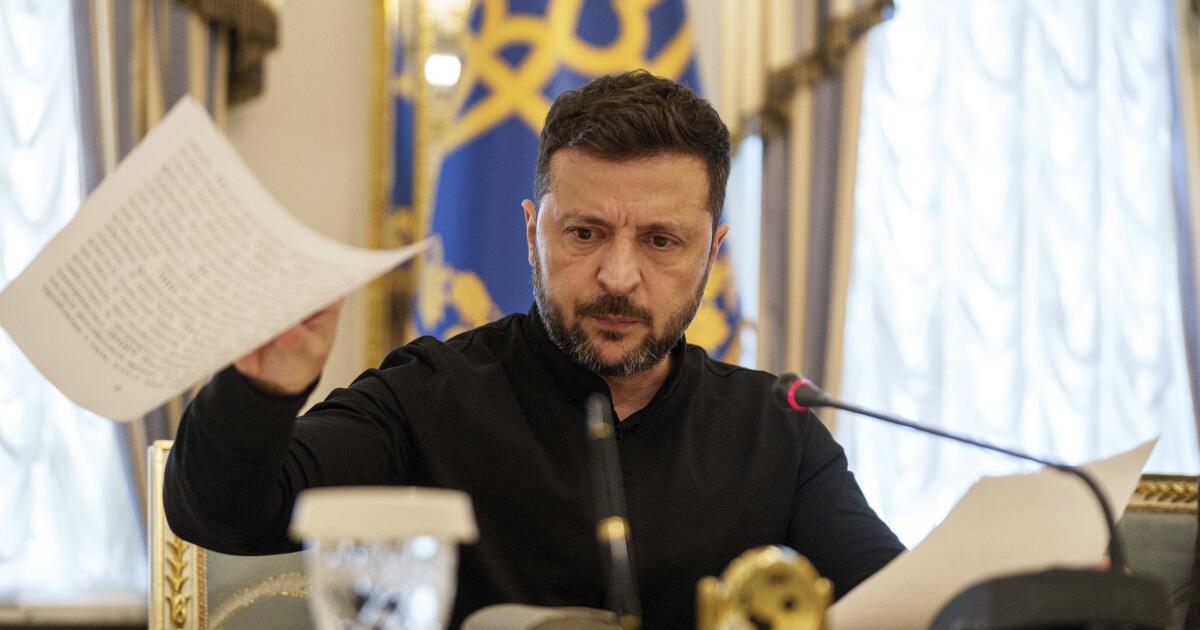Trump and Zelensky hold talks, with U.S. leader showing hesitance to send Kyiv Tomahawk missiles
WASHINGTON — President Trump is hosting Ukrainian President Volodymyr Zelensky for talks at the White House on Friday, with the U.S. leader signaling he’s not ready to agree to sell Kyiv a long-range missile system that the Ukrainians say they desperately need.
Zelensky arrived with top aides to discuss the latest developments with Trump over lunch, a day after the U.S. president and Russian President Vladimir Putin held a lengthy phone call to discuss the conflict.
At the start of the talks, Zelensky congratulated Trump over landing last week’s ceasefire and hostage deal in Gaza and said Trump now has “momentum” to stop the Russia-Ukraine conflict.
“President Trump now has a big chance to finish this war,” Zelensky added.
In recent days, Trump had shown an openness to selling Ukraine long-range Tomahawk cruise missiles, even as Putin warned that such a move would further strain the U.S.-Russian relationship.
But following Thursday’s call with Putin, Trump appeared to downplay the prospects of Ukraine getting the missiles, which have a range of about 995 miles.
“We need Tomahawks for the United States of America too,” Trump said. “We have a lot of them, but we need them. I mean we can’t deplete our country.”
Zelensky had been seeking the weapons, which would allow Ukrainian forces to strike deep into Russian territory and target key military sites, energy facilities and critical infrastructure. Zelensky has argued that the potential for such strikes would help compel Putin to take Trump’s calls for direct negotiations to end the war more seriously.
But Putin warned Trump during the call that supplying Kyiv with the Tomahawks “won’t change the situation on the battlefield, but would cause substantial damage to the relationship between our countries,” according to Yuri Ushakov, Putin’s foreign policy adviser.
Ukrainian Foreign Minister Andrii Sybiha said that talk of providing Tomahawks had already served a purpose by pushing Putin into talks. “The conclusion is that we need to continue with strong steps. Strength can truly create momentum for peace,” Sybiha said on the social platform X late Thursday.
Ukrainian officials have also indicated that Zelensky plans to appeal to Trump’s economic interests by aiming to discuss the possibility of energy deals with the U.S.
Zelensky is expected to offer to store American liquefied natural gas in Ukraine’s gas storage facilities, which would allow for an American presence in the European energy market.
He previewed the strategy on Thursday in meetings with Energy Secretary Chris Wright and the heads of American energy companies, leading him to post on X that it is important to restore Ukraine’s energy infrastructure after Russian attacks and expand “the presence of American businesses in Ukraine.”
It will be the fourth face-to-face meeting for Trump and Zelensky since the Republican returned to office in January, and their second in less than a month.
Trump announced following Thursday’s call with Putin that he would soon meet with the Russian leader in Budapest, Hungary, to discuss ways to end the war. The two also agreed that their senior aides, including Secretary of State Marco Rubio, would meet next week at an unspecified location.
Fresh off brokering a ceasefire and hostage agreement between Israel and Hamas, Trump has said finding an endgame to the war in Ukraine is now his top foreign policy priority and has expressed new confidence about the prospects of getting it done.
Ahead of his call with Putin, Trump had shown signs of increased frustration with the Russian leader.
Last month, he announced that he believed Ukraine could win back all territory lost to Russia, a dramatic shift from the U.S. leader’s repeated calls for Kyiv to make concessions to end the war.
Trump, going back to his 2024 campaign, insisted he would quickly end the war, but his peace efforts appeared to stall following a diplomatic blitz in August, when he held a summit with Putin in Alaska and a White House meeting with Zelensky and European allies.
Trump emerged from those meetings certain he was on track to arranging direct talks between Zelensky and Putin. But the Russian leader hasn’t shown any interest in meeting with Zelensky and Moscow has only intensified its bombardment of Ukraine.
Trump, for his part, offered a notably more neutral tone about Ukraine following what he described a “very productive” call with Putin.
He also hinted that negotiations between Putin and Zelensky might be have to be conducted indirectly.
“They don’t get along too well those two,” Trump said. “So we may do something where we’re separate. Separate but equal.”
Madhani writes for the Associated Press.


